History
Pioneering Waterpower
PIONEERING
IN THE 1940’s
Ketchikan was powered by expensive diesel
When the City’s population nearly doubled after a large pulp mill moved to the community in the 1950’s, Ketchikan Public Utilities (KPU) considered Swan Lake for a hydro dam, but it was not developed.
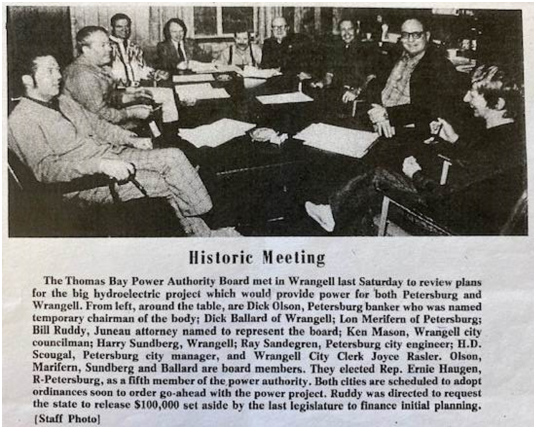
1974 - 1979
In 1974, the Thomas Bay Power Authority (“TBPA”) was created by Wrangell and Petersburg to identify and develop hydro projects for the benefit of those two communities and received grant funds to pursue their vision. The State loaned TBPA $2 million dollars and a study was conducted which recommended development of Tyee Lake for a lake tap. On June 21, 1979, the TBPA requested that the Alaska Power Authority (“APA”) take over the project and on September 27, 1979, the APA board authorized a memorandum of understanding with TBPA for the transfer.
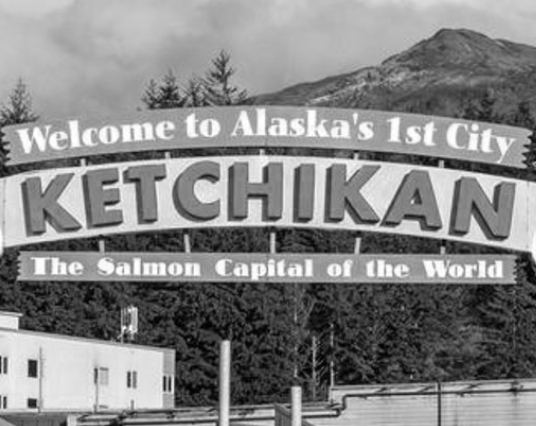
1977
In 1977, the City of Ketchikan authorized an engineering firm to investigate the feasibility of developing Swan Lake as a major hydro resource and after determining the benefit/cost ratio, the City authorized final design of the project.
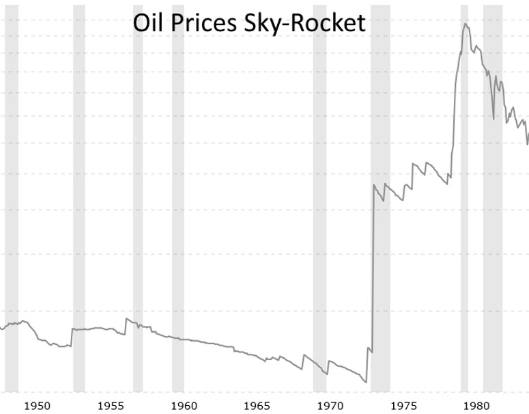
1979 - 1980
When oil prices skyrocketed in 1979-1980 the State of Alaska was in a financial position to infuse large amounts of money into the development of renewable energy projects, which led to the construction of four hydroelectric projects between 1982 and 1985 by the APA (Solomon Gulch, Tyee Lake, Swan Lake, and Terror Lake).
1980-1982
Construction begins & ownership transfers to APA
The 1980 Legislature through a joint resolution authorized the APA to issue bonds up to $120 million to finance construction of Swan Lake. Construction was initiated by KPU in November 1980. Funding for project design and initial construction was secured primarily through loans from the APA’s Power Project Revolving Loan Fund.
On May 28, 1981, the APA loaned KPU $35 million (the city was released from the loan in 1983 and the APA assumed responsibility) for construction from funds which had been raised through the sale of General Obligation Bonds. Then on May 21, 1982, the APA and KPU executed an Acquisition Agreement under which, in return for releasing Ketchikan from $35 million in loan obligations and providing funds to complete project construction, the APA would receive title to the Swan Lake Project. As operator of the project, the City of Ketchikan would receive sufficient power for its needs via a power sales agreement so at that time, all four projects were owned lock, stock, and barrel by the APA.
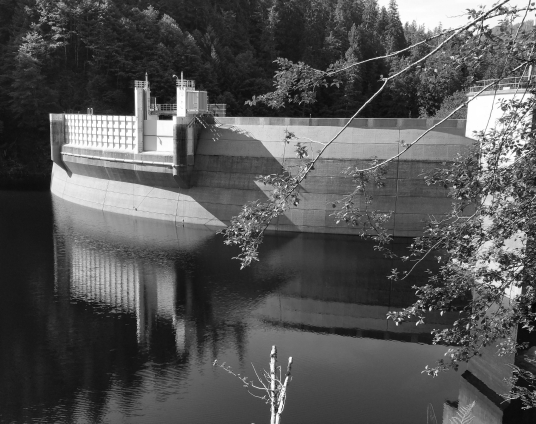
A BENEFIT FOR ALL
The advantage of constructing these four projects was that debt service, and operations and maintenance costs could all be pooled together so that five municipal and cooperative utilities in Alaska could all be charged the same Wholesale Power Rate (“WPR”) for power sold from the four projects.
The State did not favor one municipality over another. All four projects were funded by the State for a total of $482.7M ($1.532B in 2021 dollars). Some projects cost more than others per kW so to ensure the benefit was levelized for all Municipalities, the wholesale rate was set the same for everyone.
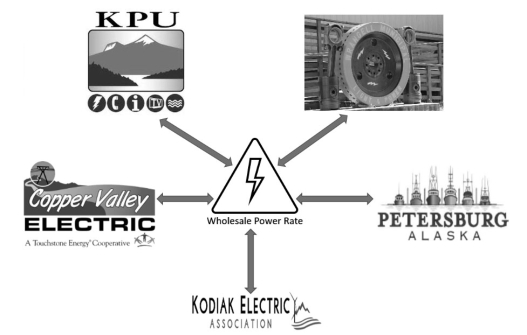
1985
Five municipal and cooperative utilities, Ketchikan Public Utilities (KPU), Wrangell Municipal Light & Power (WMLP), Petersburg Municipal Power and Light (PMPL), Copper Valley Electric Association (CVEA) and Kodiak Electric Association (KEA) all purchased power at this WPR from the APA under a Long-Term Power Sales Agreement which became effective on October 28, 1985.

1986
On June 30, 1986, the APA and Wrangell and Petersburg agreed to authorize the TBPA to operate and maintain Tyee Lake.
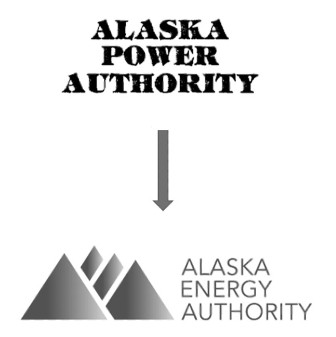
1989
Enabled by the APA, in 1989, an executive order changed the name of the APA to the Alaska Energy Authority (“AEA”) formed as a public corporation within the Department of Community & Economic Development which by statute has a legal existence independent of and separate from the State of Alaska. Its purpose was to promote, develop, and advance the general prosperity and economic welfare of the people of Alaska by providing a means of constructing, acquiring, financing, and operating power projects and facilities that recover and use waste energy.
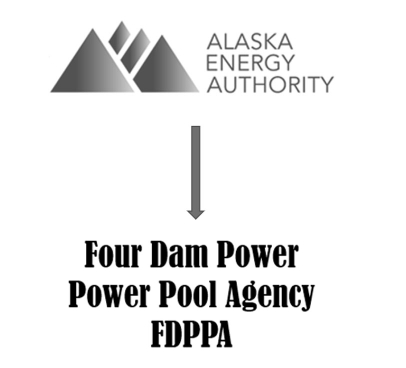
1999 - 2000
The State of Alaska considered the four projects operating under the Power Sales Agreement to be a significant liability. On May 11, 1999, the House approved House Concurrent Resolution (HCR) 10 which would sell the projects and divest the State from future obligations. On December 1, 2000, the five utilities agreed to form one Joint Action Agency (“JAA”) that would function as an Alaska Public Corporation and operate as a separate and distinct entity from the five utilities. They named this entity The Four Dam Pool Power Agency (“FDPPA”).
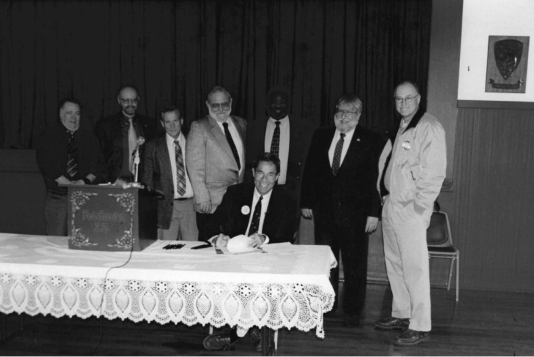
2002
On January 1, 2002, the AEA sold all four projects to the FDPPA, in a transaction referred to as “Divestiture”. The FDPPA assumed all obligations, liabilities, and risks of ownership of these four projects and the AEA divested itself from its obligations, liabilities, and risks of ownership. The FDPPA was governed by a Board of Directors (“BOD”) made up of representatives from each of the communities/utilities served by the projects.
The Alaska Industrial and Development and Export Authority (AIDEA) loaned the FDPPA $73 million to purchase the projects and the FDPPA in turn pledged $.04 of every kilowatt hour sold to repay the loan to AIDEA (debt service). The wholesale power rate was based on the debt service plus the cost to perform Operations and Maintenance which was calculated based on yearly budgets vs. yearly sales.
2006
The Swan-
Tyee Intertie
In 2006 discussions began for restructuring the FDPPA. Kodiak made a proposal to the FDPPA to restructure (Divestiture Part II) and purchase the Terror Lake project for $38 million. Given the geographical distance and lack of electrical interconnection, discussions began about divesting Copper Valley Electric as well. At that time 57 miles of right-of-way for the Swan-Tyee Intertie had been cleared and 50% of the foundations were installed with plans to interconnect Petersburg, Wrangell, and Ketchikan, but funds ran out in 2004 and construction was halted. The FDPPA was seeking $50 million in funding to complete the planned electrical intertie between Swan Lake and Tyee Lake hydro facilities. The funding for the section that was already completed was from federal money and program receipt money (40% of every kilowatt hour sold from the $.04 pledged by the FDPPA to pay the State went into the intertie). This intertie would become known as the “Swan-Tyee Intertie” (“STI”). Kodiak Electric was in the planning stages of the Upper Hidden Basin Diversion Project and Copper Valley Electric was in the planning stages for Solomon Gulch Transmission Line Relocation project. With large Capital Projects in planning stages and the STI already under construction, utilizing FDPPA reserves (RR Fund), discussing potential bonding requirements and determining the annual Wholesale Power Rate were at the top of the BOD quarterly meeting agendas.
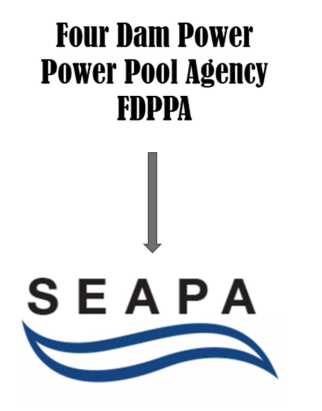
2009
In February 2009, the BOD agreed to restructure by selling Terror Lake to Kodiak Electric Association for $38 million and transferring Solomon Gulch to Copper Valley Electric Association. Because FDPPA reserves would require equitable disbursement and with consideration to Copper Valley Electric's large capital projects in the planning stages, FDPPA paid CVEA $15 million to divest. As a result, the two remaining projects, Swan Lake and Tyee Lake, were owned by the FDPPA which renamed itself the Southeast Alaska Power Agency (“SEAPA”) to better reflect that these two remaining projects serve Southeast Alaska communities. The legal entity remained the same; the only difference was that the entity’s name changed.
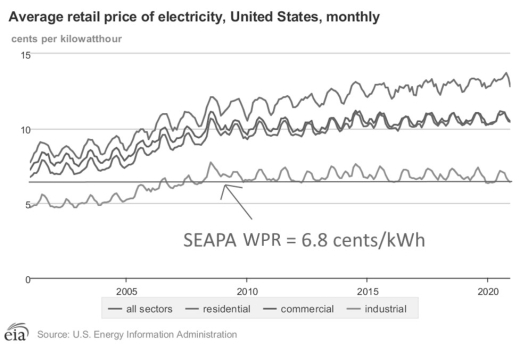
2009
As a part of restructuring in 2009, SEAPA entered into a Long-Term Power Sales Agreement (“PSA”) with the communities/utilities of Ketchikan, Wrangell, and Petersburg (“Member Utilities”) to set forth the terms and conditions under which SEAPA would sell and the purchasing utilities would buy electric power from SEAPA. The WPR was maintained at 6.8/kWh, which is a huge benefit to Petersburg, Wrangell and Ketchikan rate payers considering the National average for residential power is 13.9/kWh and Kodiak is 13.8/kWh in 2021.
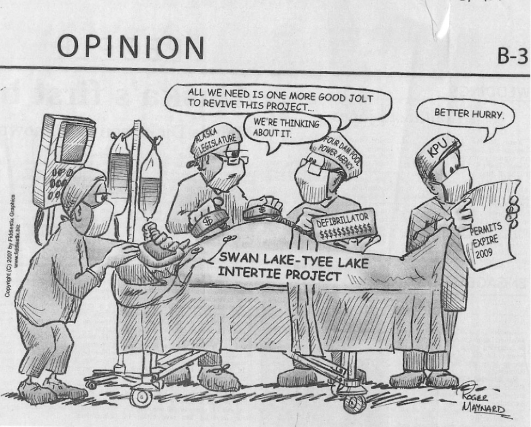
2009
Funding was eventually secured to complete the STI and it was energized on October 21, 2009 to provide interconnected operations between the Tyee-Wrangell-Petersburg grid and the Swan Lake-Ketchikan grid.
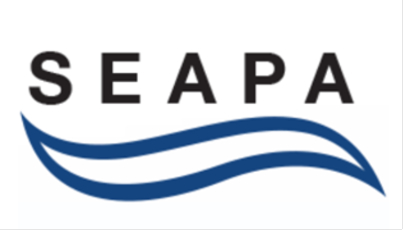
A GOVERNING BODY
SEAPA is governed by Bylaws and a Third Amended Joint Action Agency Agreement adopted pursuant to AS 42.45.310 (the Joint Action Agency statute). It is overseen by a BOD appointed by the Member Utilities but has a separate and independent legal existence from the public utilities that both appoint its board members and purchase power from the projects.
Any debt, liability, or obligation of SEAPA is seperate and distinct from each Member Utility
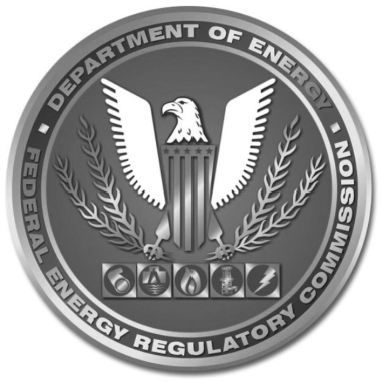
MEMBER UTILITIES
The relationship between SEAPA and its Member Utilities is a multi-faceted one. The Member Utilities appoint SEAPA’s board members. As a party to the PSA, each Member Utility is obligated to purchase all the energy and capacity from the projects. SEAPA owns the two projects and is the licensee under the FERC licenses.
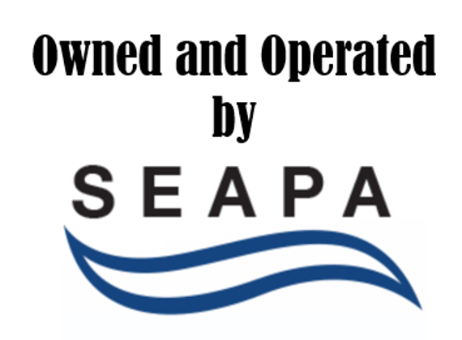
2014 - 2019
At the time of restructuring, KPU still operated Swan Lake and the TBPA operated Tyee Lake; however, on June 26, 2014, SEAPA assumed all obligations and duties for Operations and Maintenance (“O&M”) of the Tyee facility from the TBPA, and on July 1, 2019, SEAPA and KPU entered into transition agreements to release KPU from its responsibilities under the O&M Agreement for operations at Swan Lake and formally transition O&M responsibilities to SEAPA.